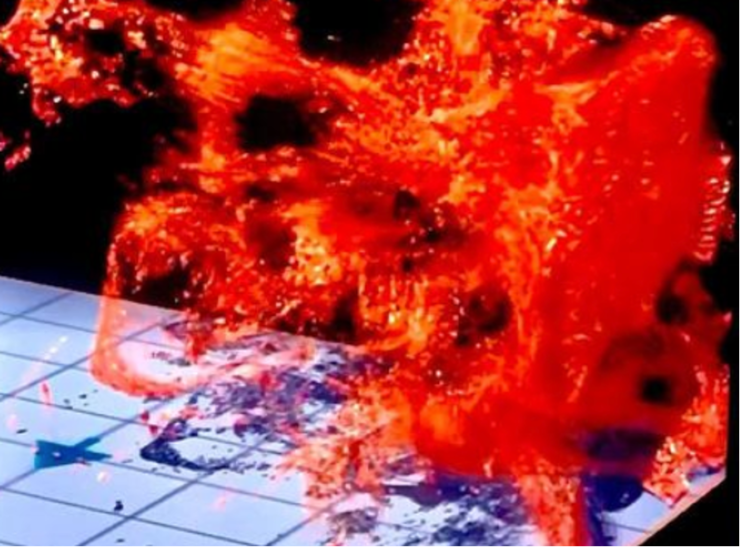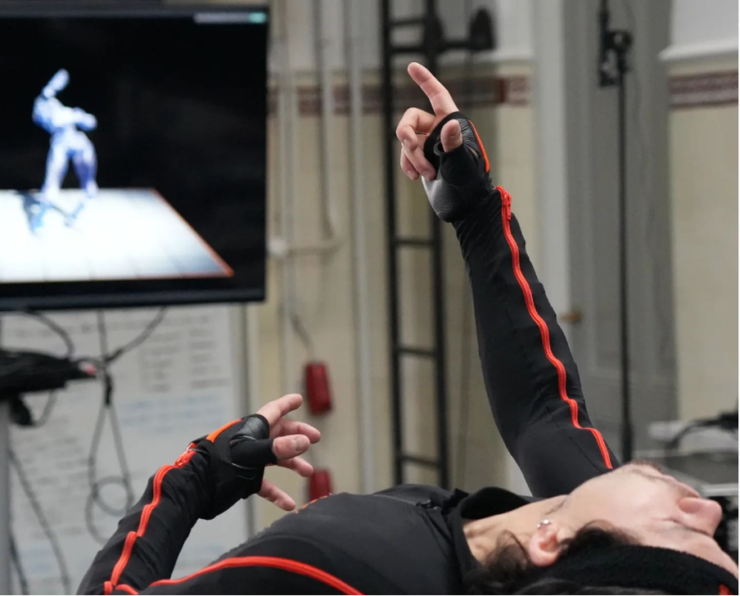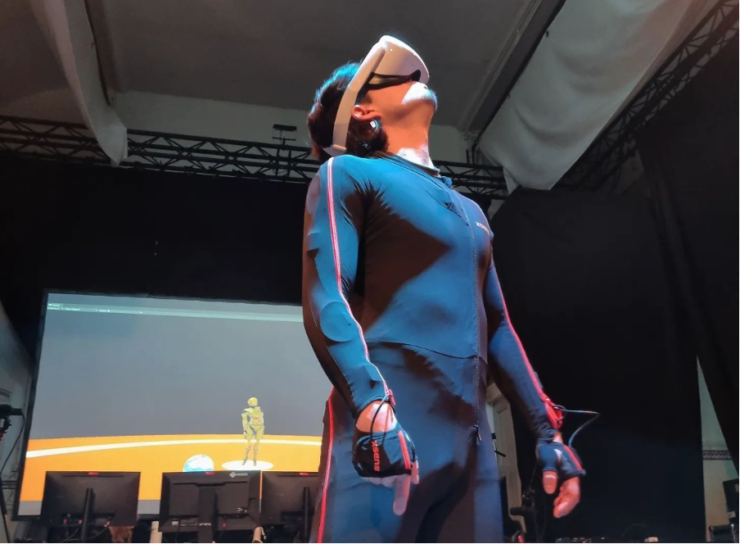Documentation
Life, Universe, and Karen Barad: The Stage of Death by A Thousand Agential Cuts – Olga Efremov

When it comes to thinking about the future, I am a self-confessed techno-optimist, or to be more academically precise, a strong believer in what Jennifer Gildley (2017) called “integral futures” the incorporate “mixed methods, transcisciplinarity, complex bricolage” (95). As the seminar presenters Sonja Rebecca Rattay and Irina Shklovski noted when speaking about the social imaginaries of AI, “[t]he reality will most likely lie somewhere in between, in an uncomfortable grey zone of compromises, trade-offs and negotiations of values and desired futures. In these negotiations, moral values can be interpreted and actualized in many different ways” (Utrecht University 2022a). The complex intermediality of AI social imaginaries made me wonder whether these negotiations could be appropriately theorised through the lens of Karen Barad’s “relational ontology of agential realism” (2007, 389) as ontologically inseparable entanglements. Barad points out that “entanglements are highly specific configurations and it is very hard work building apparatuses to study them, in part because they change with each intra-action” (Barad, 74).
The privilege and pleasure of a digital culture researcher is the opportunity to engage with visual and often aesthetically appealing representation of such configurations. According to media art scholars Christel Stalpaert, Kristof van Baarle and Laura Karreman (2021), “the contemporary performing arts render interesting configurations of what we called composite bodies and posthuman prototypes” (4). Shortly before the seminar I have attended an experimental VR performance Transcendance produced and staged by Theater Utrecht’s Innovation:Lab in collaboration with Studio VRij (Picture 1). A mesmerising tale of unity, transformation and transience narrated through the intra-action of the performing human body of the choreograph and dancer Ruben Chi and his digital representation on VR stage opens the conversation with the audience about the aesthetics of the “theatre of the future” (Theatre Utrecht n.d.). At the same time, it calls those willing to reflect on the emerging theatre forms as social imaginaries to consider what Barad calls “a posthumanist ethics, an ethics of worlding” (392). In Meeting the Universe Halfway, Barad argues that “as long as representation is the name of the game, the notion of mediation—whether through the lens of consciousness, language, culture, technology, or labor—holds nature at bay” (375).

Picture 1. Developing Transcendance at Theatre Utrecht Innovation:Lab (2022).
The innovative forms of representation offered by VR technology invite a discussion not only about the aesthetic affordances of AI, but also of the narrative logic of putting a human body in the centre of all that intra-action (Picture 2). In my previous blogpost I wrote about “the potential to die” that Heiner Müller argued “is specific to the theatre” (Utrecht University 2022b). Transcendance takes the spectators through the process of death by a thousand agential cuts that “cut things together and apart” (Barad, 381). The narrative logic of the performance, while strongly reminiscent of Joseph Campbell’s Hero’s Journey as popularised by Star Wars cinematic storytelling, takes the spectator beyond a mere tale of the protagonist’s individuation. As Karen Barad emphasises, “agential separability is not individuation. Ethics is therefore not about right response to a radically exterior/ized other, but about responsibility and accountability for the lively relationalities of becoming of which we are a part” (393). Perhaps “the potential to die” embedded in performative AI imaginaries is not the dystopian tale of human obsolesce, but rather an invitation to a never-ending journey of experimental entanglements and configurations in which the present reality of AI systems is negotiated? Only the future can tell.

Picture 2. Transendance aesthetics.
References
Barad, Karen. 2007. “The Ontology of Knowing, the Intra-Activity of Becoming, and the Ethics of Mattering.” In Meeting the Universe Halfway: Quantum Physics and the Entanglement of Matter and Meaning, 353–96. Durham: Duke University Press. https://doi.org/10.2307/j.ctv12101zq.12.
Gidley, Jennifer M. 2017. The Future: A Very Short Introduction. New York, NY: Oxford University Press.
Stalpaert, Christel, van Baarle, Kristof, and Karreman, Laura, eds. 2021. Performance and Posthumanism: Staging Prototypes of Composite Bodies. Cham: Springer International Publishing AG. Accessed December 22, 2022. ProQuest Ebook Central.
Theater Utrecht. n.d. “Transcendance.” Accessed February 23, 2023. https://www.theaterutrecht.nl/voorstellingen/transcendance.
Utrecht University. 2022a. “Social Imaginaries of Ethics and AI” – Sonja Rebecca Rattay and Irina Shklovski (Copenhagen University) and Marco Rozendaal (TuDelft).” Transmission in Motion. Accessed December 22, 2022. https://transmissioninmotion.sites.uu.nl/social-imaginaries-of-ethics-and-ai-sonja-rebecca-ratay-and-irina-shklovski-copenhagen-university-and-marco-rozendaal-tudelft.
Utrecht University. 2022b. “The Potential to Die: “Do Performing Robots Dream of Sinterklaas?” A Child’s Play – Olga Efremov.” Accessed February 23, 2023. https://transmissioninmotion.sites.uu.nl/the-potential-to-die-do-performing-robots-dream-of-sinterklaas-a-childs-play-olga-efremov.
Images:
Efremov, O. 2022. “Death by a Thousand Agential Cuts.” A fragment of display at Transcendance debut performance in Utrecht. Photographed on December 15, 2022. Digital image. Private collection.
Stichting Theater Utrecht. n.d. “Transcendance.” Instagram image gallery. Accessed February 23, 2023. https://www.instagram.com/p/CmMaVjbImo3.
Theater Utrecht. n.d. “Transcendance.” Webpage image gallery. Accessed February 23, 2023. https://www.theaterutrecht.nl/voorstellingen/transcendance.

